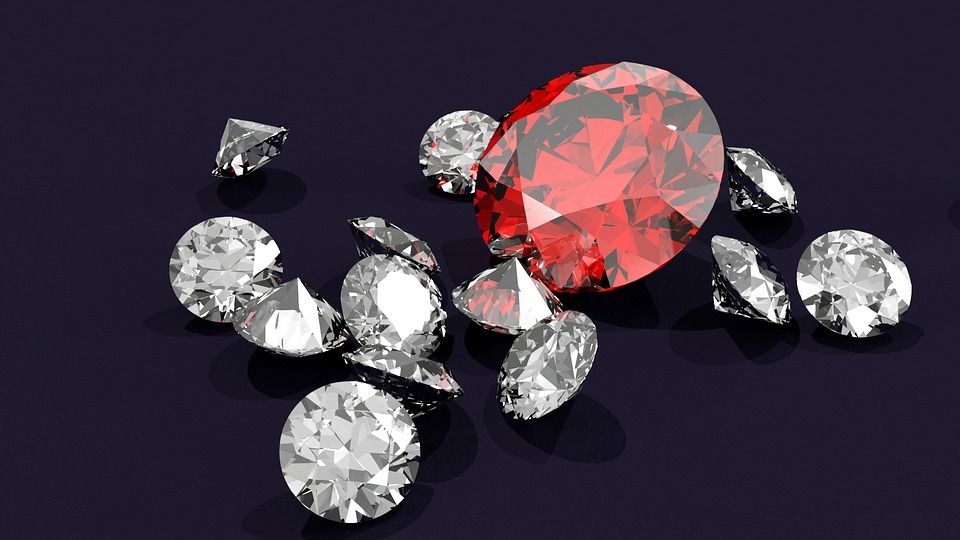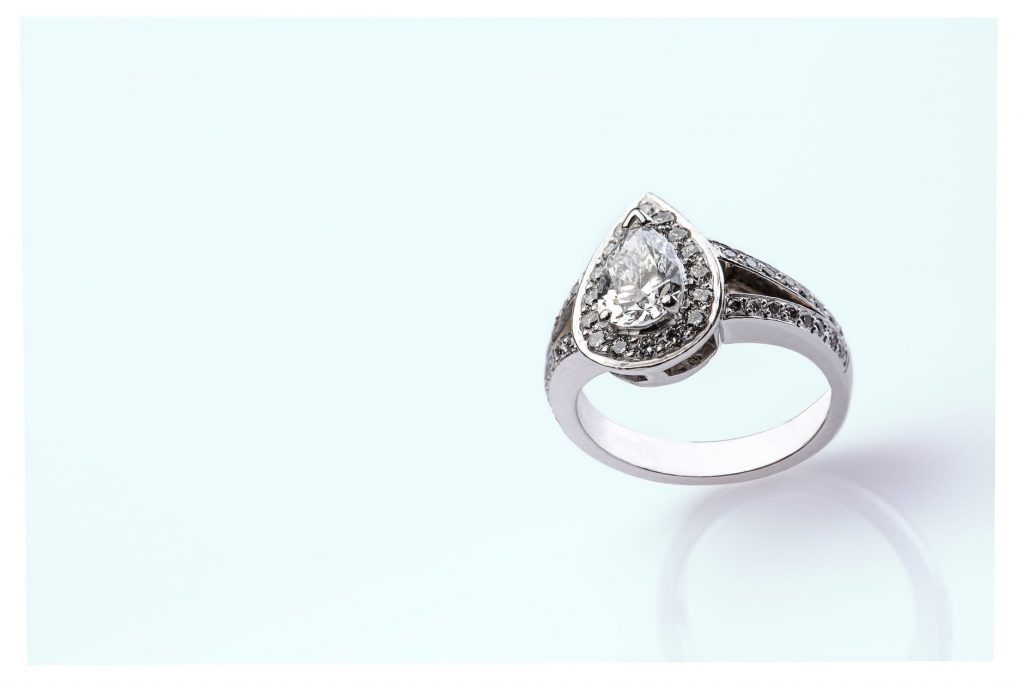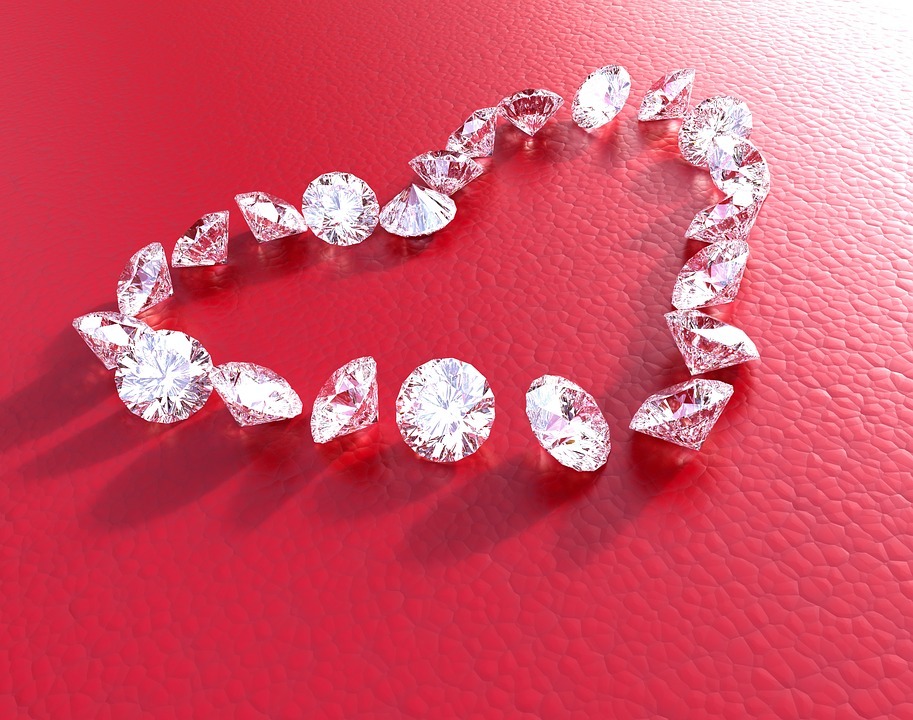Ready to buy a diamond for your lovely girl? You have set the budget and you know she’s going to love it and keep it because it’s from you. The next step would be knowing how to choose a diamond. Diamond shopping is not a walk in the park, especially for guys who don’t know squat about jewelry. But it pays to get informed when it comes to diamonds, because it’s a precious jewel and you want to get your money’s worth. After all, diamonds are expensive, so you have to make sure that you are getting the quality for the amount you’ll be paying for.
The good news is that there are guides like this that you can check out, to help you decide and have complete peace of mind about your diamond purchase. Here’s a helpful guide on how to buy a diamond:
1. Consider diamond shape
One of the most important factor you have to figure out when buying a diamond is the shape your receiver is expecting. Most people who receive diamonds as a gift or for an engagement ring have their shape preferences. This is purely based on tastes and aesthetics. There are ten common diamond shapes: round, princess cut, cushion cut, oval, marquise, pear-shape, heart-shape, Asscher cut, radiant cut, and emerald. Here are some tips to consider when choosing a diamond shape:
- Know what she likes
The choice of shape should include input from the receiver of the diamond. If you want to buy an engagement ring and you are the type of couple who are comfortable asking for the kind of gifts you want to receive from each other, you can ask her early on about her preferred shape. When and where you are going to propose will still be a surprise. If you don’t want to ask her, try consulting her friends. She has probably mentioned it before to one of them. Or you can have her friends or best friend talk her into opening about her diamond preference. If you can’t get the answer and you do not want to know it from her, the safest shape to consider is round.
Unless a particular preference is expressed, consider a round diamond. This shape tends to have more brilliance and scintillation than other shapes, and these can accommodate almost any ring setting. Plus, it’s a classic and timeless shape that will never go out of fashion. Round brilliant cut is the most popular shape and cut, as these cuts offer the least amount of crystal lost.
- Choose depending on her personality
If you also do not know what shape she prefers and doesn’t want to ask her, you can choose depending on her personality. If she’s a simple, down-to-earth or traditional, choose round or cushion cut shapes. If she’s a hopeless romantic, a heart-shaped diamond will melt her heart. If she is bold, loves to speak her mind and loves making a statement, choose diamond shapes that look larger, like oval, pear-shape and marquise. If she wants to be unique and if she’s artsy, choose radiant cut, emerald or Asscher cut.
- Consider how it will look on her fingers
Besides these, you must also consider how the diamond shape will complement her hands. The shape and size of her fingers will affect how the ring looks on it. Women with short fingers should try elongate shapes such as oval, pear or marquise, and avoid wide ring bands as it gives an illusion of even shorter fingers. Square shapes like the princess and radiant are best for ladies with long fingers. If your girlfriend has larger hands, avoid slender and delicate ring settings and narrow diamond shapes like the emerald or marquise, as these will not look proportional. Round and hart shapes are your best choice for larger fingers, but these are not flattering for thin fingers.
2. Determine carat weight range you can afford
A carat (ct.) refers to the weight of a gemstone, such as a diamond. This is one of the four C’s to consider when buying a diamond, which are carat, cut, color and clarity. Typically, the heavier the diamond is, the bigger it gets. Both the size and the weight of the diamond can directly affect the cost of a certain diamond. To get the most bang for your buck, here are some considerations for choosing the right carat weight:
- Look for diamonds that are under the popular carat weights.
The carat weight has the greatest effect on the price of the diamond. If you’re on a budget, it’s best to look for diamonds that fall under popular carat weights like 0.5 ct., 0.74 ct., 1 ct., etc. Since these diamonds just fall shy of the popular weight, they are often sold at a lower price compared to the full weight. For instance, a .90 ct. diamond can cost significantly less than a 1 ct. diamond, but visually, they are difficult to distinguish. But if budget isn’t an issue, then you can choose a bigger stone.
- Your shape of choice can make up for a lesser carat weight.
For engagement rings, the most popular carat weights are between one and two carats. A one-carat, brilliant cut round diamond can usually fetch at least $4,000. So, if that price is too expensive for your budget, you can consider a diamond of a lesser carat in a marquise cut, which appears larger than other shapes because of its elongated cut. This way, your diamond ring can still look very expensive even on a lesser carat weight.
- Consider your partner’s expectations.
Another crucial issue is your bride-to-be’s expectations. In most cases, the larger the diamond, the better. But if you’d rather save the money for your future marriage, it’s always good to know her minimum expectations. If her heart is set on a 2 carat diamond, then even the most beautiful half carat stone will be a disappointment. But if she is an understanding and considerate woman who doesn’t expect much, she will not mind having a smaller diamond – the thrill of a certain future with you will weigh more for her.
3. Decide on the quality of cut
After determining the shape and the size of the stone you want, you need to decide on the cut quality. The cut refers to the way the diamond’s facet is polished to attract light and reflect it on the inside. Because of this, the quality of the cut also has a notable effect on the diamond’s price.
Choosing the cut grade can be tricky, since is not not standardized all across different vendors. Some vendors only offer cut grades on round diamonds (since this is the most standard shape), while other shapes don’t have cut grades. Most retailers use the terms “Excellent,” “Very Good,” “Fair” and “Poor.” Some uses “Ideal,” “Signature Ideal” and “Excellent.” So be cautious when comparing cut grades from different sellers, because it will most likely be inconsistent. It’s more important to use the certificate’s cut grade over and above the individual site’s cut grade.
Advice for choosing cuts
If you are looking for a round, brilliant diamond, choose only “Ideal/Excellent” grade diamonds. “Very good” is okay if budget is a concern. If you still can’t afford it, better yet choose a different gemstone rather than settling for a poor cut diamond, because most of these diamonds are unacceptable when traded off. A poor cut diamond will seem dull even with excellent clarity and color. By the way, some vendors doesn’t offer poor cut diamonds anyway.
Factors that affect cut grade
Cut grade is a rating that incorporates variety of factors, which is vital in evaluating a diamond. However, many times it’s not important to evaluate these individual factors, because the cut grade has already taken them into account. But if you are comparing two diamonds of identical cut grade from one seller, you should consider the individual components of cut. Here are they:
- Culet size
The culet size is the flat face on the bottom of the diamond that affects the face-up appearance. Any culet size of medium or smaller will not be noticeable to the naked eye, and doesn’t have an impact on a diamond’s appearance.
- Girdle
The girdle is the outer edge of the diamond stone, where the top (crown) meets the bottom (pavilion). This is described according to the width, and oftentimes, the width of the girdle varies at different points around the diamond. Girdle is quoted in a range that describes the thinnest and thickest point along the girdle. For instance, a “thin-medium” girdle means the width varies from thin to medium. A thicker girdle adds weight to a diamond, which increases the price. When buying diamond rings, avoid an extremely thin girdle as it’s more susceptible to chipping. For earrings and pendants, it will be okay, as these accessories are less exposed to rough contact. If you do choose a diamond with very thin girdles, then consider a setting that covers and protects the corners.
- Polish
Polish refers to the finish of the stone that gives its smooth, glass-like surface. It depends on the quality of work, and gemologists examine the polish grade under 10x magnification to look for imperfections the cutter may have left behind. Nearly every diamond has a flaw due to polish, but many of these flaws are hard to see by the naked eye. Diamonds that have a polish grade of excellent to good do not have defects that are visible to the naked eye.
- Symmetry
Symmetry of the diamond refers to the arrangement and conformity of facets in a finished diamond. Not all diamonds have to be symmetrical, but diamond cutters try to produce symmetrical stones. Symmetry also has an impact on price – a diamond with excellent symmetry and polish may be priced around 10-15% more expensive than a diamond with a good rating.
4. Choose an ideal color grade
The color of the diamond has an effect on both the diamond’s appearance and price. Jweelers grade diamonds on a D to Z grade. “D” is the most colorless diamonds, while “Z” has the most visible brownish or yellowish hue. The more colorless the diamond, the rarer it is and the more expensive it gets. But sometimes, fancy colored diamonds like blue and red can be just as expensive as colorless diamonds.
Tips for getting the most bang for your buck
Many untrained eyes can’t distinguish a color grade from one diamond to another unless the diamonds are compared side by side in a controlled environment. To get the best value while still picking a diamond that will appear to be colorless to the naked eye, look for G to J diamonds. For diamonds larger than 1 carat, choose G-H, and I-J for those under 1 carat. This is because the color is more noticeable the bigger the stone is.
Diamonds with more facets reflect more light, thus enabling them to hide color better than other shapes. So, you can consider princess, round or any other brilliant cuts over step cuts like emerald or Asscher, if you are concerned about the appearance of being colorless.
If you want to prioritize carat weight but you are on a tight budget, choose a yellow gold band and a brilliant cut diamond in K-L color. The yellowness of the gold can complement the faint color of the diamond.
5. Choose the optimal clarity grade
Diamond clarity is the quality that relates to the existence and visual appearance of inclusions and blemishes. It’s how the flawlessness of a diamond is measured. The clarity grade of diamonds are defined by the Gemological Institute of America (GIA) and American Gem Society (AGS), though the most commonly used grading for clarity is the GIA’s standards.
Clarity ranges
- Internally flawless (IF / AGS 0)
Internally flawless diamonds have no inclusions or blemishes visible under 10x magnification. This level of clarity is very rare, thus very expensive.
- Very, very slightly included (VVS1 and VVS2 / AGS 1 and 2)
If you don’t want to tolerate imperfections even for those you can’t see, choose VVS1 or VVS2, which means very, very slightly included. These kinds of diamonds has minute inclusions that are difficult for a skilled grader to see even in 10x magnification. Around 10% of all diamonds sold fall into this category.
- Very slightly included (VS1 and VS2 / AGS 3 and 4)
The most popular range for diamond clarity is the VS1-VS2. These diamonds look flawless to the naked eye, and costs a fraction of the price of an internally flawless diamond. It has minor inclusions that are difficult to see by most people.
- Slightly included (SI1 and SI2 / AGS 5, 6 and 7)
The SI1 is the next most popular range, where the inclusions are slightly noticeable and are fairly easy to see under 10x magnification. But it doesn’t impact the appearance of the diamond for a casual observer. Usually, customers will opt for SI1 or SI2 grade in exchange for a better color grade and a higher cut grade. In diamonds under 1 carat, this is a fine clarity grade to consider, but in diamonds over 1 carat, the inclusions may be easier to detect.
- Included (I1, I2, I3 / AGS 7, 8, 9, 10)
Included diamonds have inclusions or imperfections that are obvious at 10x magnification, and sometimes can be seen by the naked eye.
Tips for buying considering clarity
Your best choice for clarity grade is the VS1 and VS2, because when compared with VVS grade by the naked eye, it’s hard to see the difference. At least, VS1-2 is cheaper. The larger the diamond, the easier it is to detect
If you are primarily concerned with getting a big diamond but concerned with price, I1 can be your best option. The inclusions may be visible, but many consumers find it to be well worth the sacrifice for what the price affords in size.
6. Get a report
Once you have chosen a diamond jewelry to purchase, it’s best to get a grading report. Your purchase of diamonds one carat or larger must be accompanied with a grading report issued not by the seller, but by independent gemological associations like the GIA and AGS. You may also get a “fingerprint” of the ring on the bill of sale, which includes the 4C’s of the stone, shape, dimensions and any other features. Also, specifications that can affect its value, like if it’s an antique or period piece, if it’s made by a famous designer, or if it’s hand-made or custom-designed, must be noted in the grading report.
7. Get insurance
If you have spent a significant amount of money for your engagement ring, you’ll want to insure it. So if it will ever get lost or stolen, you can receive a fair compensation. Insurers will require a diamond grading report before they give you an insurance policy, so that’s another reason to get one.



